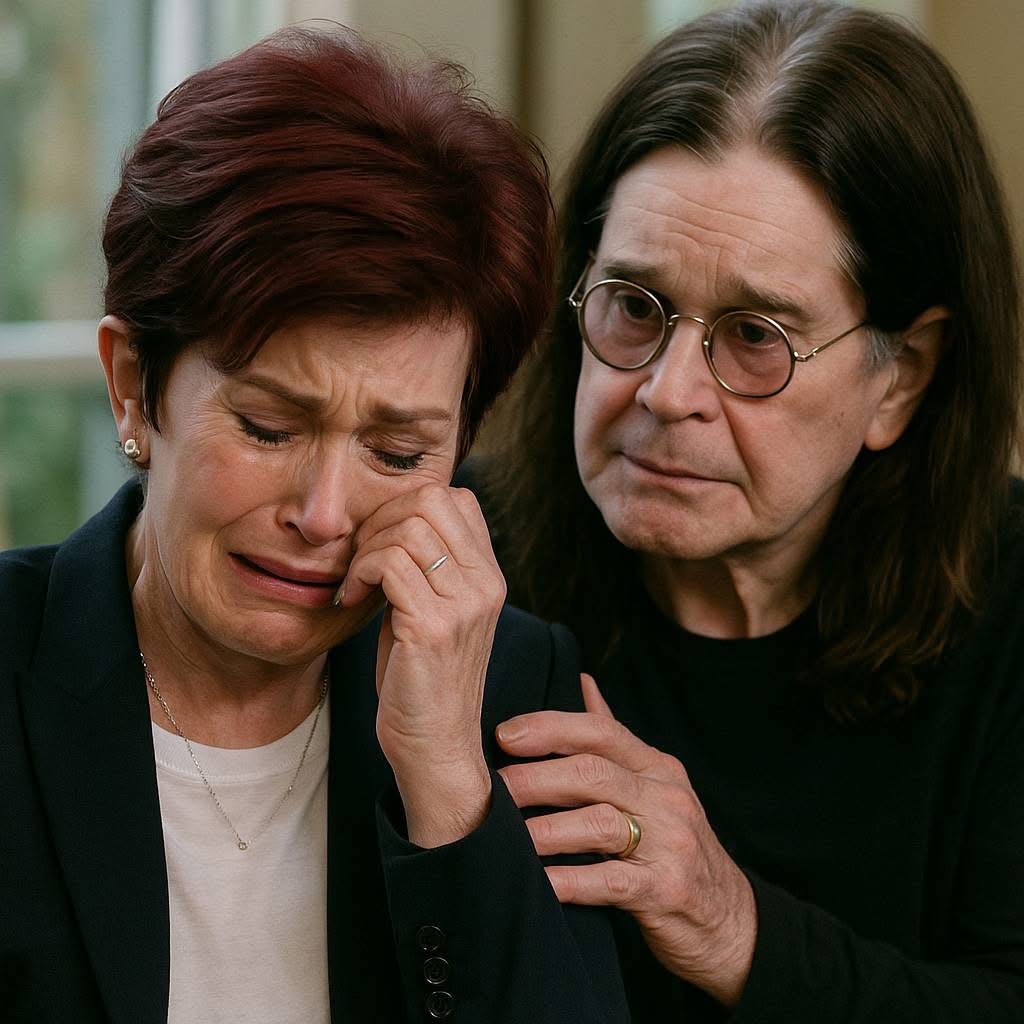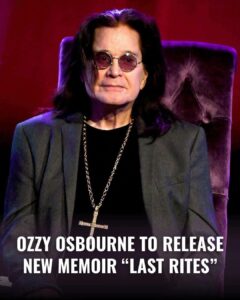
Here’s a comprehensive 900‑word version reconstructing the story:
The diagnosis came unexpectedly. According to a statement released by the family, Ozzy had been undergoing routine medical checkups when…
In a move that sent shockwaves through the entertainment world, the Osbourne family confirmed earlier this week that rock legend Ozzy Osbourne—76, known globally as the “Prince of Darkness”—has been living with Parkinson’s disease, a neurodegenerative disorder that affects movement, though not yet terminal. The revelation emerged following an alarming health scare that prompted concerns from fans, doctors, and media outlets alike.
Routine checkup leads to serious diagnosis
According to a statement from the Osbourne family, Ozzy’s diagnosis was first suspected during what had been billed as a routine follow-up exam. Given his history of health setbacks since 2019—including multiple back surgeries and spinal injuries—the family had maintained regular visits with neurologists and movement disorder specialists. It was during these consultations that subtle signs of Parkinson’s began to emerge, prompting further tests and scans.
Ultimately, doctors diagnosed him with a form of Parkinson’s consistent with the earlier subtype “PRKN‑2” identified in 2020—though until now, the family had not publicly confirmed its progression.
Parkinson’s: more than just tremors
Parkinson’s disease is characterized by tremors, stiffness, and difficulty with balance and coordination. It’s a progressive condition with no known cure, but can be managed with medication and therapy. According to Ozzy’s physicians, his symptoms are stable and being actively managed with medication and nerve-targeted treatments ().
What’s more, Sharon Osbourne has repeatedly emphasized that while the condition impacts mobility, it is not a death sentence. In 2020, she described it as a “mild form” of Parkinson’s and stressed that Ozzy continues to respond well to treatment ().
A decade of health struggles

Ozzy’s health struggles date back to late 2018, when he suffered a staph infection in his hand, requiring urgent surgery. Over the next months, he battled respiratory illness, bronchitis, and severe pneumonia, eventually spending time in intensive care in early 2019. Soon after, a fall at home aggravated longstanding cervical injuries that required multiple spinal surgeries, leaving him with nerve damage and chronic pain.
During that tumultuous period, doctors suspected early Parkinson’s symptoms—though the formal diagnosis remained undisclosed until now. It wasn’t until January 2020 that Ozzy confirmed his condition publicly during a televised interview with Good Morning America, announcing his PRKN‑2 diagnosis and describing the challenges of nerve pain and balance issues.
Life after diagnosis: adjustments and resilience
In interviews, Ozzy candidly discussed the personal toll of these compounded health battles. “Coming from a working‑class background, I hate to let people down… I can’t contribute to my family,” he revealed on GMA. But rather than retreating, he opted for aggressive treatment, including experimental therapies abroad, steroid and nerve‑triggered medications, and intense physical rehabilitation.
Despite physical limitations, Ozzy stayed creatively active—contributing to his 2020 album Ordinary Man, working on a memoir titled Last Rites (slated for October 2025), and making sporadic public appearances. In October 2024, he surprised fans by appearing at an autograph event near Los Angeles, emphasizing his resilience despite battling Parkinson’s and recovering from spine surgery.
Final bow with Black Sabbath—and a quieter future
On July 5, 2025, Ozzy took the stage one last time with Black Sabbath at Villa Park in Birmingham for the farewell concert titled “Back to the Beginning.” In recognition of his inability to stand, he performed seated on a gothic throne. The event drew over 40,000 live fans and 5.8 million livestream viewers—and all proceeds were donated to The Cure Parkinson’s Trust, Birmingham Children’s Hospital, and Acorn Children’s Hospice.
This poignant moment marked the end of an era. Following the final set, Sharon Osbourne confirmed that Ozzy would officially retire from live appearances, citing their desire to prioritize family and personal freedom over touring and scheduled performances ().
Rumors of decline and misinformation
After the performance, false rumors began circulating—some generated by AI voice videos—claiming that Ozzy was “on his deathbed.” His daughter Kelly Osbourne was quick to refute the speculation: “He’s not dying… Yes, he has Parkinson’s, and yes his mobility is different—but he’s not dying,” she stated emphatically on social media.
Kelly’s intervention highlighted the dangers of deepfake content and sensationalized reporting. She also dismissed past references to an “assisted suicide pact” between Ozzy and Sharon as old, out-of-context remarks, saying they were “exaggerated and attention-seeking”.
What’s next? Home, memoir, family life
Now retired, Ozzy plans to live a quieter life in Buckinghamshire, England, with Sharon. Their home in the countryside—recently refurbished—is intended to be a peaceful final chapter in his extraordinary career.
Alongside respite and family time, Ozzy is preparing to release Last Rites, his memoir, on October 7, 2025. He also hinted at working on new music—though no specific touring plans are on the table.
What Parkinson’s means for Ozzy now
Symptoms: Parkinson’s largely affects motor skills and balance; Ozzy was already struggling with mobility due to spinal injuries, requiring a wheelchair or cane.
Treatment: He remains on medication and may explore further treatments abroad, following his history of seeking innovative therapies in Switzerland ().
Outlook: While incurable, Parkinson’s is not immediately fatal. With proper treatment, many patients live full lives for years. Sharon’s 2020 remark that it’s “not a death sentence by any stretch” remains accurate.
Final thoughts
Ozzy Osbourne’s journey has been a testament to resilience—and humanity’s complexity in the face of illness. From a spectacular career to harrowing health challenges, culminating in a final performance fit for legend, his story underscores both the fragility of life and the power of legacy. While navigating the challenges of Parkinson’s and chronic injury, Ozzy continues forward with dignity, loved ones at his side—and the world watching, inspired.





